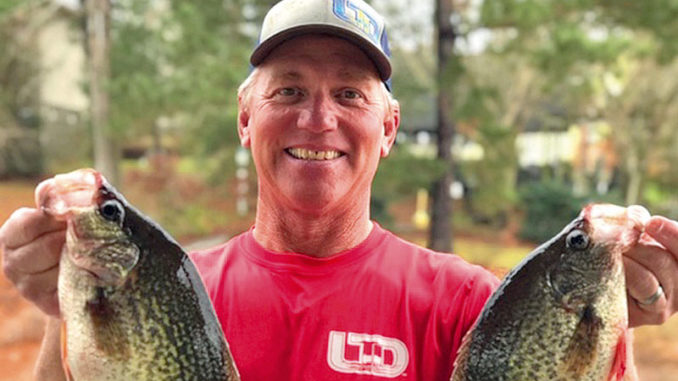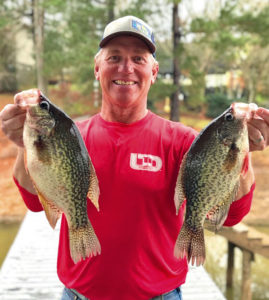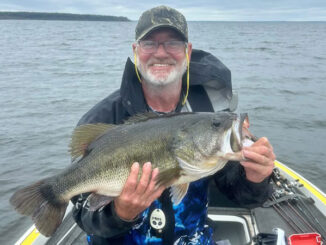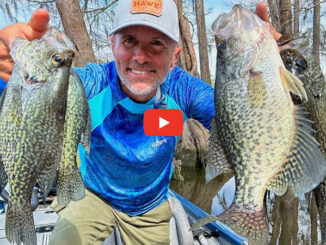
March is prime time to ambush crappie, aka white perch or sac-a-lait, on the flats in almost any cove, preferably the northern side of each, on Toledo Bend.
After nearly 20 years targeting crappie as a full-time guide, Jerry “J.T.” Thompson of Livin’ the Dream Guide Service in Many has crappie right where he wants them this time of year. Like bass, the tasty panfish head to the shallows to spawn, and he and his eight full-time guides head them off at the pass, so to speak.
“In March, when the major spawn takes place, you’ve got fish coming and going,” Thompson said. “The opportunity to catch fish varies. What we try to do that time of year is catch on the flats. We try to intercept them coming in or out. We do that more than try to catch them on their beds.
“Just about any cove has some kind of ditch or channel (that is) a little deeper. At some point, the coves flatten out, and that’s where we try to target them. It makes it a lot easier if grass is there,” he said, noting that won’t be the case this year.
“The best fishing will be just prior to the full moon in March.”
Those fish stay up, too.
“They don’t leave ‘til they finish up the deal,” he said. “And they don’t do it at the same time all over the lake,”
Anyone who thinks Toledo Bend crappie fishing is on a decline should understand that when Thompson started guiding 19 years ago, he left the ramp with a ¼-pound bag of minnows. Today, he and his guides leave with a ¼-pound bag of minnows per person and a 60-quart ice chest on each boat.
The best part about this time of year is proof that size matters.

“March is the best time to catch the biggest fish,” Thompson said.
It’s a time to catch quality crappie, for sure, but not necessarily 25-fish limits.
“If you hit them right, you’ll catch a limit, but that’s not really the norm. Two people in a boat, 50 fish, it can happen,” he said, nothing that 20 big slabs per angler will fill an ice chest.
Most of the fish that are shallow are black crappie. White crappie usually spawn a little bit later and in deeper water.
Thompson’s approach is simple but effective. He uses either a spinning combination or a spincast combo to cast a 1/16-ounce black/chartreuse Blakemore Roadrunner.
“People around here say two colors: black/chartreuse, chartreuse/black. If they don’t bite black/chartreuse, they’re probably not going to bite,” Thompson said.
The idea is to locate the fish that are either staging somewhere or on the move. After finding fish, they drop minnows to them. He uses a gold Aberdeen hook, the size depending on the size of his minnows. If they are very small, he uses a No. 4 hook. If they’re average size, he uses a No. 2. He hooks minnows through the lips or eye sockets and uses a No. 7 split shot.
Thompson, 55, doesn’t give an area very long to produce. If there are no takers after so many minutes, he goes to another cove.
“If conditions are right, there are fish in every cove this time of year,” he said. “The bigger the flat, the bigger the creek, the more fish it’ll hold. We catch fish in the lake in every one of the creeks.”
Water temperature also plays a critical role in successful sac-a-lait fishing in the spawning period, he said. The north sides of coves and flats usually warm earlier than other areas. An ideal water temperature is between 62 and 65 degrees.
Surprisingly, March is also the best time to target and catch crappie at night, according to Thompson. Bridges with lights are the hottest of the hot spots. Other structures with lights also give up crappie.
“Night fishing with lights is a really big thing in March,” he said.


